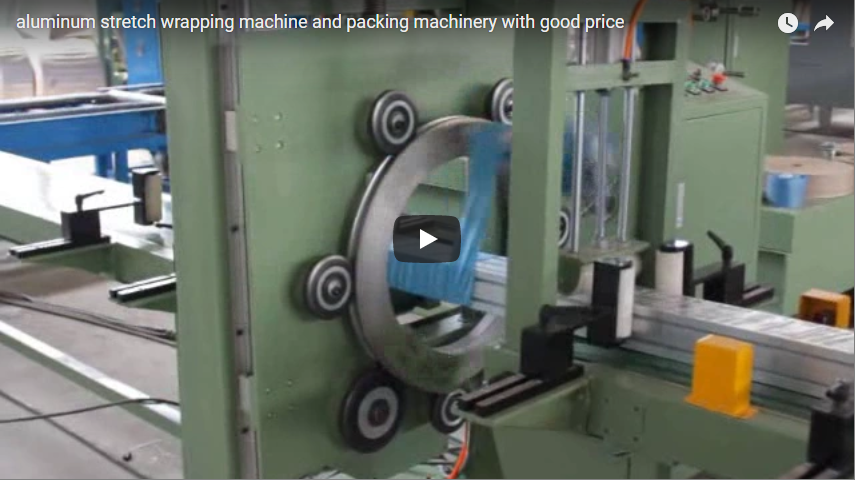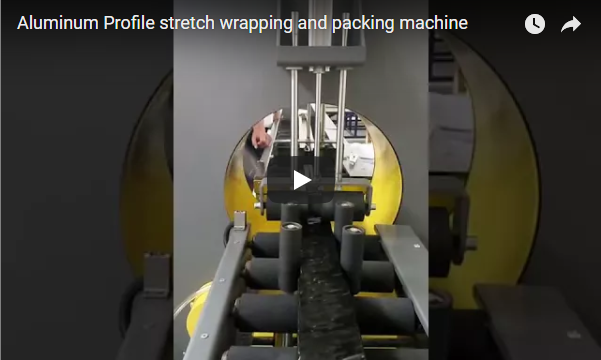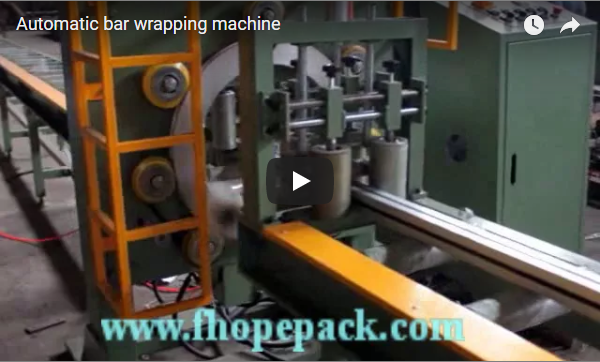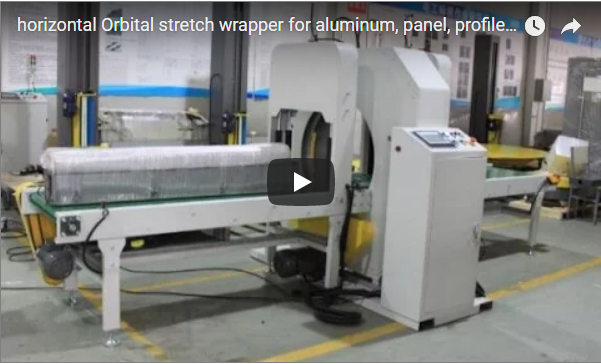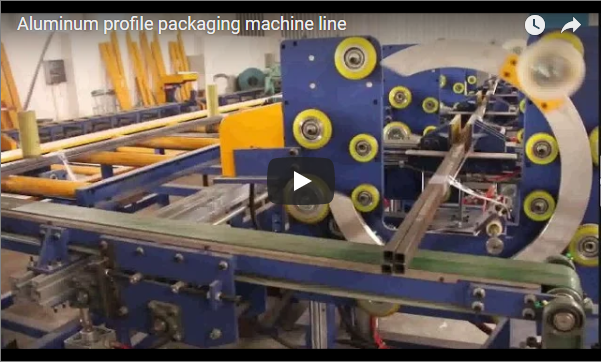Enhancing Aluminum Extrusion Efficiency: A Technical Deep Dive into Automated Profile Stacking Machines
Manual handling of aluminum profiles downstream from the extrusion press is a well-known bottleneck in modern manufacturing operations. It frequently leads to surface damage (scratches, dents), poses ergonomic risks to personnel, limits overall line speed, and introduces variability in stacking quality. Automated aluminum profile stacking machines provide a robust engineering solution, directly tackling these challenges to boost productivity, ensure consistent quality, and improve workplace safety. This article delves into the operational mechanics, design considerations, key components, and performance benefits of these critical systems, aligning with the practical focus favored by Industrial Equipment News readers.
1. Core Operational Principles and Design Engineering
At their heart, automated stacking systems leverage a synergistic combination of precision conveyance, sophisticated robotic manipulation, and intelligent sensing technologies. The operational sequence typically involves:
- Profile Reception: Receiving extruded and cooled profiles from the runout table or cooling bed conveyor.
- Singulation & Orientation: Separating individual profiles and orienting them correctly for stacking.
- Handling & Placement: Utilizing robotic arms (often gantry or articulated arm types) equipped with specialized grippers to lift profiles. These grippers are critical and often feature:
- Non-Marring Contact Surfaces: Employing materials like high-density polymers (e.g., UHMW-PE) or soft rubber compounds to prevent surface damage.
- Adaptive Pressure Control: Using pneumatic or servo-electric actuation with force feedback to apply just enough pressure to securely hold profiles without causing deformation.
- Versatile Jaw Designs: Configurable to handle a wide array of profile shapes and sizes.
- Layer Formation: Precisely placing profiles onto a stacking cart, dunnage, or pallet according to pre-programmed patterns (e.g., nested, aligned, separated by spacers). Advanced systems utilize computationally optimized kinematic motion paths to maximize speed while minimizing stress on the profile and mechanism.
- Stack Management: Indexing the stack downwards or the robot upwards as layers are completed, potentially including automated insertion of protective spacers between layers.
Intelligent control, orchestrated by Programmable Logic Controllers (PLCs) interfacing with Human-Machine Interfaces (HMIs), relies heavily on sensor fusion – integrating data from optical sensors, laser distance meters, and proximity switches – for accurate positioning, collision avoidance, and confirmation of process steps. This level of automation ensures repeatable high-precision layer formation crucial for stable and dense bundles, minimizing transit damage.
2. Key Technical Specifications & Performance Metrics

Evaluating an aluminum profile stacking machine involves assessing several key parameters. Here's a comparative look at typical specification ranges:
Technical Parameter Comparison List:
| Parameter | Typical Range / Specification | Importance |
|---|---|---|
| Profile Length Handling | 3 meters (10 ft) - 14 meters (46 ft) or more | Must match extrusion press output and customer requirements. |
| Profile Weight Capacity | Up to 50 kg (110 lbs) per profile or higher | Dictated by profile dimensions and alloy density. |
| Stack Dimensions (W x H) | Up to 1.5m x 1.5m (5ft x 5ft) or customized | Determines bundle size for downstream handling and shipping. |
| Cycle Time | 5 - 15 seconds per profile (application dependent) | Directly impacts overall line throughput. |
| Stacking Accuracy | Typically ± 1-3 mm (± 0.04-0.12 in) | Ensures stable, uniform bundles; prevents damage during handling. |
| Gripper Type | Vacuum Suction / Mechanical Clamp / Hybrid | Selected based on profile surface, geometry, and weight. |
| Control System | PLC (e.g., Siemens, Allen-Bradley) + HMI | Enables programmability, diagnostics, and system integration. |
| Integration Protocols | EtherNet/IP, Profinet, Modbus TCP/IP, OPC UA | Facilitates communication with upstream/downstream equipment (Industry 4.0). |
| Safety Compliance | ISO 13849-1, ANSI/RIA R15.06, CE Marking | Ensures operator safety through guarding, interlocks, light curtains, etc. |
Performance Gains Often Include:
- Throughput Increase: Potential gains of 25% to over 50% compared to manual methods, depending on line configuration and profile complexity. This metric is crucial for ROI calculations.
- Damage Reduction: Minimizing handling-related defects significantly improves yield and reduces scrap rates, critical for meeting standards like ASTM B221 (Aluminum Alloy Extruded Bars, Rods, Wire, Shapes, and Tubes) or architectural finish standards like Qualicoat/AAMA.
- Labor Optimization: Frees up personnel from strenuous and repetitive manual tasks, allowing reallocation to higher-value activities.
3. Anatomy of an Automated Stacking System: Core Components
Understanding the primary components provides insight into the machine's functionality and reliability:
- Infeed Conveyor System: Transports profiles from the cooling table. Often includes sensors for profile detection and positioning. Belt, roller, or chain conveyors are common.
- Robotic Manipulator: The core handling unit. Can be a Cartesian gantry robot (ideal for long profiles and large work envelopes) or a multi-axis articulated robot (offering flexibility for complex movements).
- End-Effector (Gripper): The specialized tooling attached to the robot arm. Design is paramount for secure, damage-free handling across various profile geometries. Vacuum grippers are common for flat surfaces, while mechanical clamps offer versatility.
- Stacking Station: The designated area where profiles are layered. May include adjustable guides, automatic dunnage feeding, and mechanisms for lowering the completed stack or raising the stacking platform.
- Control Cabinet: Houses the PLC, servo drives, power supplies, and I/O modules. Typically includes an HMI panel for operator interaction, recipe management, and diagnostics.
- Safety Systems: Essential for personnel protection. Includes physical guarding (fencing), light curtains, safety mats, emergency stop buttons, and safety-rated PLC logic, adhering to standards like ISO 13849-1.
4. User Experience and Operational Advantages
From an operational standpoint, implementing automated stacking delivers tangible benefits:
- Consistency: Eliminates human variability in stacking patterns and care, leading to predictable bundle quality and stability.
- Reduced Ergonomic Strain: Mitigates risks of musculoskeletal injuries associated with manually lifting and positioning heavy or awkward profiles.
- Enhanced Throughput: Directly increases the output capacity of the extrusion line by reducing handling time.
- Improved Space Utilization: Neatly stacked bundles often occupy less floor space compared to haphazard manual stacks.
- Data Logging & Traceability: Modern systems can log production data (cycles, faults, counts), supporting process monitoring and Industry 4.0 initiatives.
- Lower Risk of Damage: Gentle, controlled handling significantly reduces scratches, gouges, and bending common in manual operations.
5. Key Industrial Applications
Automated aluminum profile stacking machines are indispensable in facilities serving diverse markets:
- Architectural & Construction: Handling long profiles for window frames, door systems, curtain walls, facades, and structural elements where surface finish is critical.
- Automotive Manufacturing: Stacking components for structural frames, battery trays, heat exchangers, roof rails, and decorative trim. Precision and damage prevention are key.
- Industrial & Engineering: Processing profiles for machine building, automation frameworks, conveyor systems, heat sinks, and robotics components.
- Renewable Energy: Stacking frames and mounting structures for solar panels, requiring careful handling of large, often thin-walled profiles.
- Consumer Goods & Electronics: Handling profiles for furniture, appliances, lighting fixtures, and electronic enclosures.
6. Integration and Maintenance Considerations
Successful implementation requires careful planning for integration with the existing extrusion line (press, puller, saw, cooling systems). Standard communication protocols simplify this process. Routine maintenance typically involves:
- Regular Inspections: Checking conveyors, gripper surfaces, sensors, and safety devices.
- Lubrication: Following manufacturer guidelines for robotic joints, bearings, and actuators.
- Calibration: Periodic checks of robot positioning and sensor accuracy.
- Software Updates: Maintaining control system software for optimal performance and security.
These systems represent continuous advancements in Aluminum profile handling and stacking machineries, reflecting ongoing efforts to meet industry demands for greater automation and efficiency.
7. Conclusion: A Strategic Imperative for Competitive Extrusion
Investing in an automated aluminum profile stacking machine is no longer a luxury but a strategic necessity for extrusion plants aiming to remain competitive. These systems deliver quantifiable improvements in throughput, product quality, operational safety, and labor efficiency. By embracing automation technologies designed with robust engineering principles and adherence to international standards (e.g., referencing guidelines from organizations like the Aluminum Extruders Council (AEC) or ISO), manufacturers can optimize their material flow, reduce waste, and position themselves for sustained growth in the demanding global market. The integration of advanced robotics, sensing, and control systems embodies the principles of modern, efficient manufacturing.

